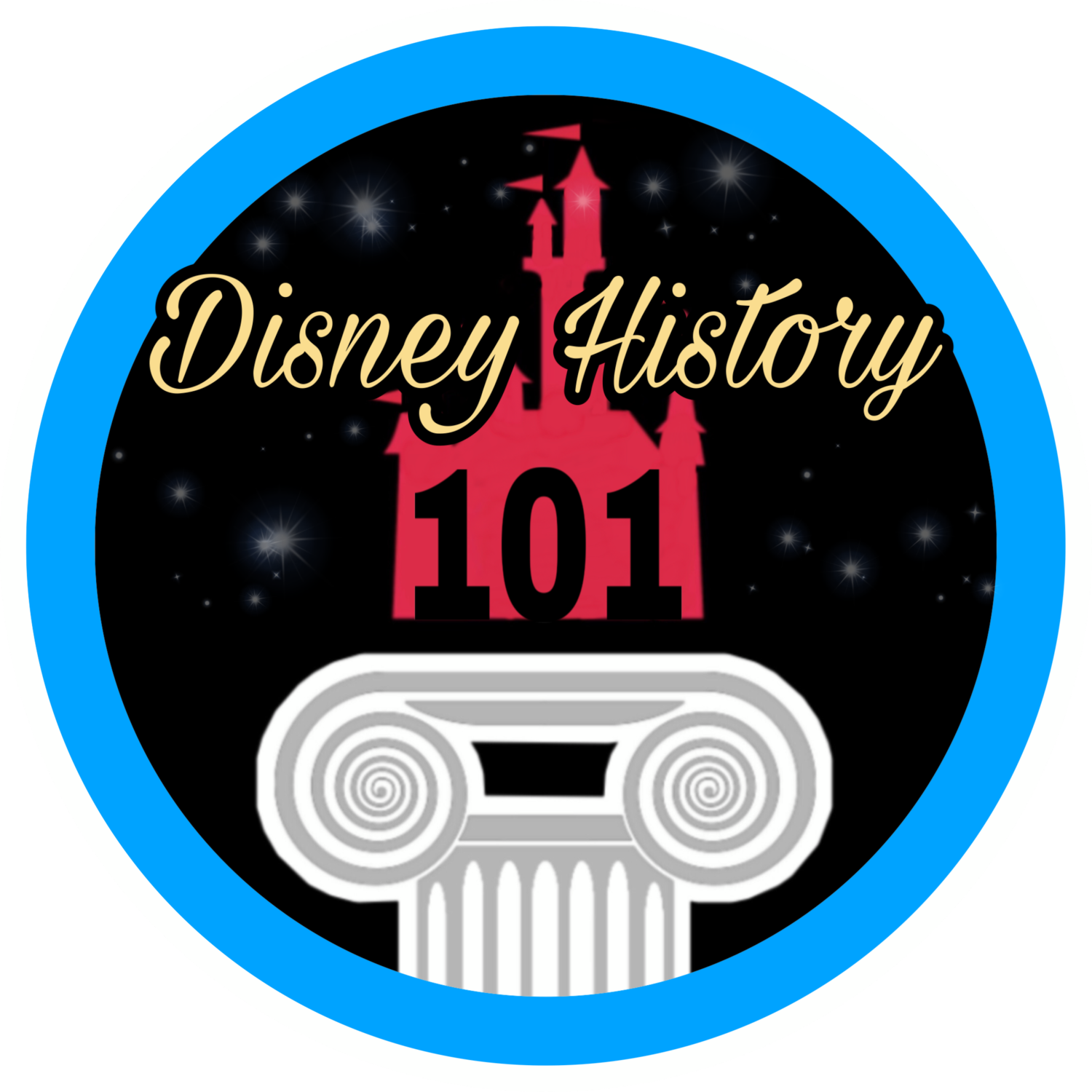WIZARD of BRAS (Hollywood- Maxwell Intimate Apparel Shop)

(July, 1955 - January, 1956)
“The Walt Disney Company & Intimate Apparel Products”
Some may find it odd that Disneyland once hosted an intimate apparel shop. But in fact, the history of the Walt Disney Company and women’s foundation garments actually dates back to the 1930s.
MILER CORSETS, Inc, included ten Snow White models in their “Smarties” line, Walt Disney's fairy tale princess being woven or printed on the fabric. Mickey and Minnie also appeared on many types of patterned clothing licensed and manufactured by companies like Miller Corsets, Inc. of Canandaigua, N. Y.
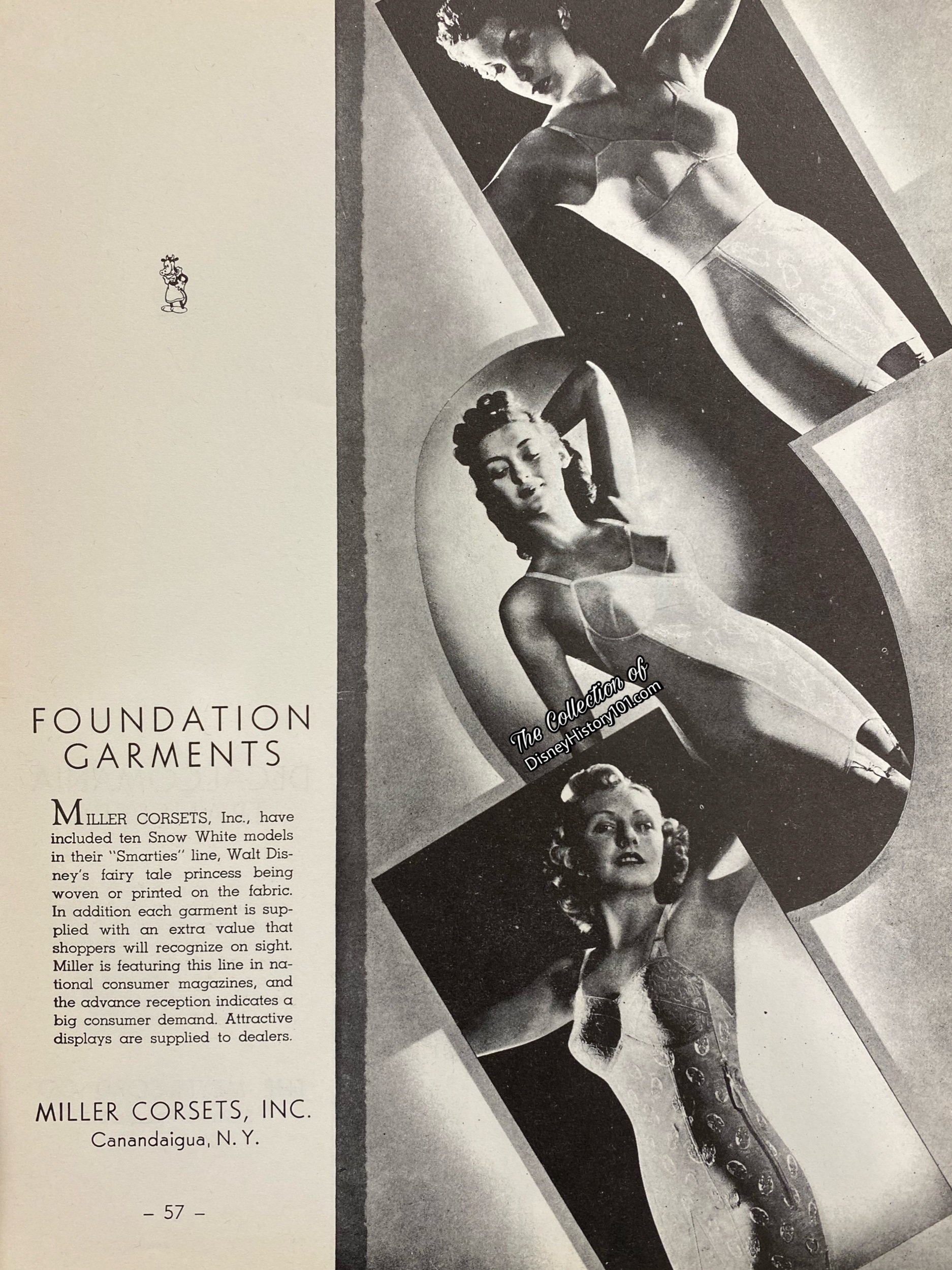
Disney character-patterned Miller Corsets were manufactured through a special arrangement with Walt Disney as seen in this Mickey Mouse Merchandise Catalogue Excerpt.
“Disneyland Participant Sponsorship”
Decades later (during 1954), Walt was searching for participants to lease shop and restaurant spaces at Disneyland, and help generate the necessary capital to fund construction of Disneyland. By July 1, 1954, George Whitney of Disneyland, Inc. directed Amusements, with Ron Miller overseeing analysis, philosophy, capacities, planning, operator training, and amusement procurement. By July 1, 1954, Russel Tippett of Disneyland Inc. Advertising oversaw Exhibitor’s Space Sales and Lease Agreements. In a synergistic relationship, the companies (in turn) could sell their products and advertise their corporate names in the Park. Disneyland Participant Corporate Sponsors were carefully selected. High quality, long term corporate sponsors would provide incremental income that enabled Disneyland to enhance its show and attractions, offset some operating expenses, and capitalize on marketing opportunities.
This would prove profitable four years later (in 1958), when Bank of America appraisers figured of the total income received from leases - 16.02% was derived from the selling of advertising rights and 40.12% from the leasing of space to concerns whose main reason for occupancy is for advertising purposes. The remaining 43.86% of the lease income was derived from stores that sell various products and food.
For now, Main Street was soon full of wonderful free exhibits hosted by a variety of “old firms” - time-tested American companies! These free exhibits celebrated turn-of-the-century American businesses that adorned small towns across the country’s landscape, while age lived “fond memories of the past.” As a result, “shopping has been a part of the Disneyland scene since opening day, 1955, when just 45 employees worked in the Park’s five stores and stands,”according to Disney News (Fall, 1966). The same publication called Walt Disney’s “Magic Kingdom actually… like a huge specialty shopping center, with thirty Disney-operated stores catering to every taste and purse. In addition, some of America’s most famous ‘name brand’ merchandise is sold in the stores of Park lessees.” It is notable to mention that during these early years, it was commonplace for merchandise locations to stock General Merchandise - non -character and/or decorative items, including film and sundries.
Several of those “old firms” specialized in name brand apparel for men, women and children! One shop (located North of Coca Cola Refreshment Corner) originally housed an exhibit dedicated to the evolution of swimwear, as well as modern swim wear merchandise by manufacturer and retailer Cole of California (from 1955 to 1957). Fantasy of Disneyland also carried clothing - like a large selection of designer little cardigan sweaters, party dresses, “Hollywood Knits,” and jumpers (by vendors like Johnny Lee of California, or Nob Hill of California). Gallen-Kamp (Famous for their “all leather shoes” sponsored Bluebird Shoes For Children, and Pendleton sold their woolen mills products - skirts, ties, and coats. Grandma’s Babies Shop operated by Don Frank Enterprises sold baby fashions. These were just a few of the clothing shops that were located inside Walt Disney’s MAGIC KINGDOM®, while there were many others that came to be located at the Disneyland Hotel!
Last (but not least important) the V-Ette Corset Shop (also billed as the Hollywood- Maxwell Intimate Apparel Shop), presented by the Hollywood-Maxwell Brassiere Co. of Los Angeles, afforded guests the opportunity to view “early day corsets and foundation garments,” from July of 1955 through January of 1956. The Hollywood-Maxwell Brassiere Co. was one such firm - and one of the largest brassiere manufacturers in the world. While their brassier factory was located in Paris, their central warehouse was located in Dallas and their main offices were located in Hollywood, California!
The lessee would soon occupy a 443 square-foot parcel in Building #500. As of June 2, 1955, C.V. Wood Jr. sent an Inter-Office Memorandum to Walt Disney regarding the best estimates that could be obtained at the time regarding the completion status of individual sections of the Park and Opening Day. C.V. wrote: “Building #506 - Hollywood-Maxwell: If they remain as a Lessee, it is very doubtful if they can be ready for opening.”
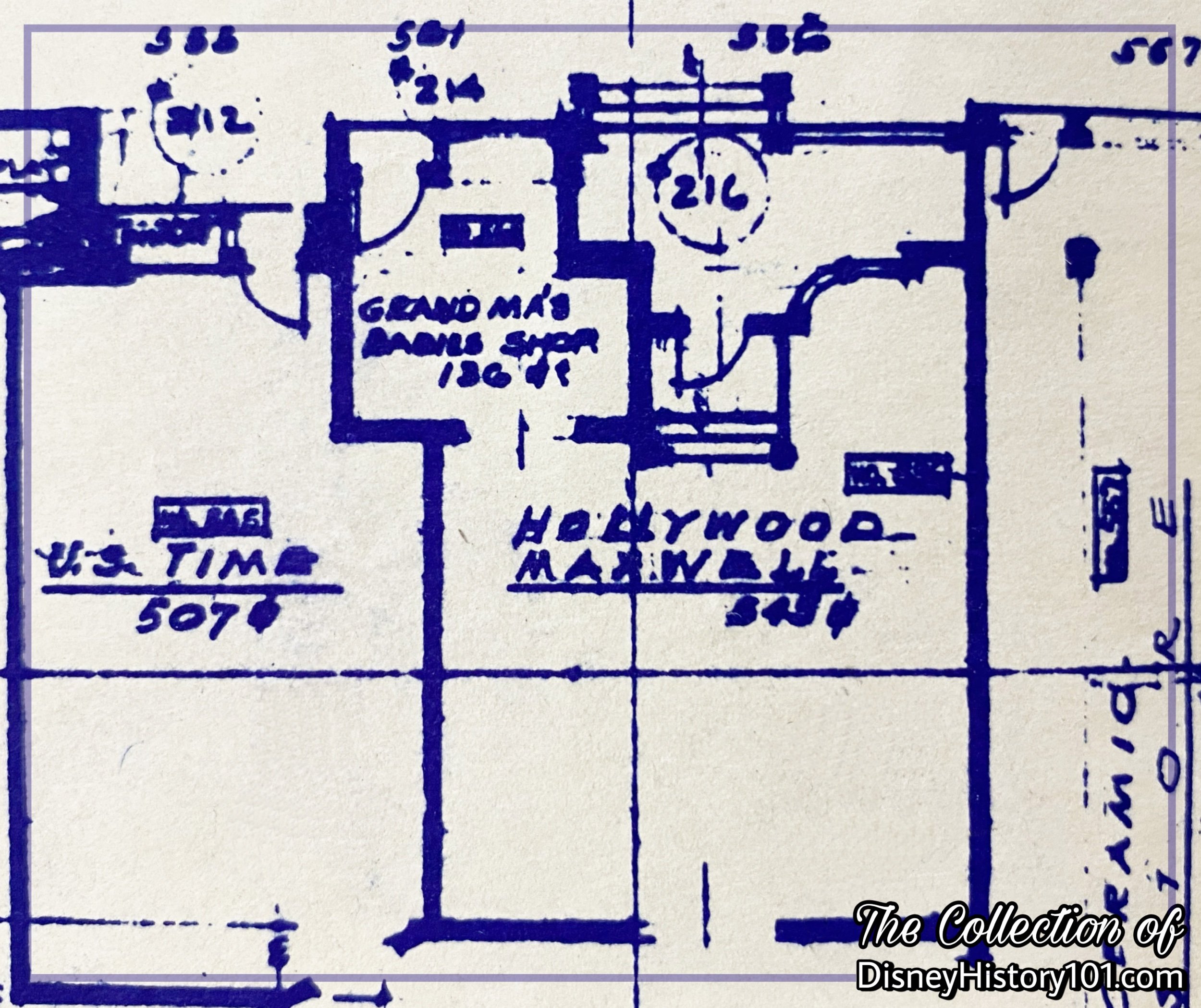
The Hollywood Maxwell shop (behind Grandma’s Babies Shop) detailed on a “Key Plan” of Main Street by WED Enterprises, Inc., c.1955.
“Disneyland is unique in that some of the world's foremost creative artists and architects control all design at Disneyland.“
“Construction”
“When the giant earth-moving undertaking was completed, the building crews took over. Soon, the rat-tat-tat of riveters was shattering the air, and sparks were flying from welders’ torches as the steel frameworks, capable of withstanding the ravages of time and the elements rose above the newly formed ground. While carpenters hammered and masons laid row upon row of brick and stone and mortar, the permanent buildings began to take shape and form,” according to “The Disneyland Story” published 1955. One of the first buildings to be constructed was the Main Street Opera House, which was used as the Mill. Here, the woodwork of Disneyland was generated - from the functional to the aesthetic! Approximately three and one-half million board feet of lumber went into the Park’s construction. Much of the wood was processed here by McNeil Construction (which formerly constructed Walt Disney Studio sound stages in 1947 and 1953), and under the direction of George Mills Sr. (the Prime General Contractor and Mill Foreman). Then, under the direction of Joe Fowler (Construction Supervisor), as well as Charles Alexander and Ray Conway (Construction Field Supervisors), the lumber was soon fashioned into the framing belonging to the very first buildings constructed at Disneyland - primarily the Main Street Complexes (on each side of the street).
F.M. Franz, manager of operations for MeNeil Construction expressed: "We feel sure there has never been anything built like this in Southern California, or elsewhere in the United States. Many of the items were constructed from artist’s sketches.” In constructing each building, a concrete foundation and slab floors were prepared, followed by wood frame construction (while store units would have a combination wood and rigid steel frame). ”The first fabricated steel for the Main Street buildings arrived November 8 and was erected,” according to the narrator of “Disneyland - The Park,” a Disneyland anthology television series excerpt, first aired 1957 and Disneyland LINE (November 22, 1979).
According to inserts published in area newspapers during July of 1955, Disney buildings were roofed by Pioneer Roof & Shingle Company (then located at 608 Mateo Street, Los Angeles, California; 7522 Westminster Avenue, Westminster, California). The roof covering was a variable, dependent on the architectural design.
As of June 2, 1955, C.V. Wood Jr. sent an Inter-Office Memorandum to Walt Disney regarding the best estimates that could be obtained at the time regarding the completion status of individual sections of the Park and Opening Day. C.V. wrote: “Electric Signs: All are in work - with the exception of the shoe store and the Bank of America, all will be completed.” Newbery Electric Corporation gave electricity to Disneyland. “The electrical installations were supervised by Roy J. Gruendler, manager of Newbery's Orange County district office located at 1335 Santiago Ave, Santa Ana.”
The Main Street Building #500 (as each on Main Street U.S.A.) possessed complete fire sprinkling systems. By June 30, 1955, related Disneyland Site Work Fire Protection Utilities Plot Plans were prepared for Disneyland Inc., by J.E. Thomasson of WED Enterprises Inc.
All fixtures were placed in their correct motif and many light fixtures of Disneyland were authentic antiques.
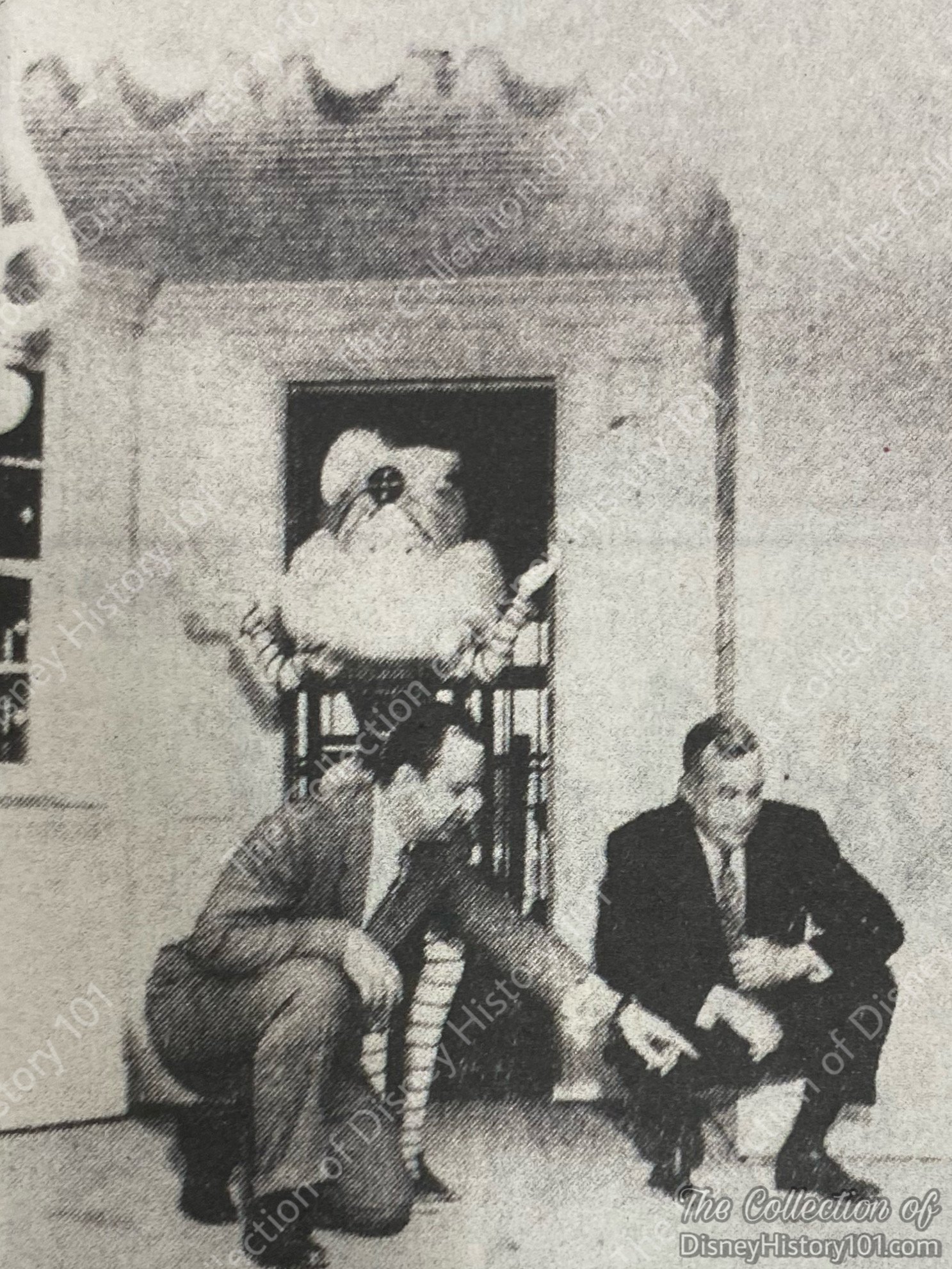
C. V. Wood (left), vice president and general manager of Disneyland, and Herndon J. Norris, president of the Hollywood-Maxwell Brassiere Co.
“The Hollywood-Maxwell Brassiere Co. Exhibit”
Disneyland guests were familiar with Hollywood-Maxwell Brassiere Co. products, as their brassieres were shipped to every United State through several retail outlets. However, as Walt described to Bob Thomas (of Associated Press), “some industries will have exhibits, but all of them must be in keeping with the era.” Here in the Park, guests could view“early day corsets and foundation garments,” according to “Welcome to Disneyland” (published 1956). Guests could also purchase both brassieres and torsolettes. There were c. 1955 Nu-Vu bras (“for fuller figures”), c. 1955 Mais Oui Convertible, the c. 1957 B. Altman & Co. floral V-Ette brassieres, c. 1953 Holly-Ette Whirlpool brassieres (which were still popular, as they accommodated women who needed “in-between” sizes), “3/4 Time Torso” Whirlpool brassieres, and strapless Whirlpool brassieres.
Hollywood-Maxwell Brassiere Co. created tangible memories for our Guests through Merchandise and Show. Now, “Disneyland is a place to have fun… and with the fun it is a place where you can learn,” according to “Disneyland, U.S.A.” (published 1958, for potential Participants). Much like the aforementioned free exhibits, there were numerous artifacts on display. An authentic 1860 Singer Sewing Machine was a “most unusual and unique part of the display” (according to one publication).
Still, perhaps the most unusual part of the display (in our opinion), was the “illusioneered,” “mechanical wizard… [emceeing a] continual show of fashions”! If you are wondering what this animated emcee looked like, contemporaneous advertisements (printed in publications) preserve the mysterious and wonderful “Wizard of Bras” for the curious. Above, “C. V. Wood (left), vice president and general manager of Disneyland, and Herndon J. Norris, president of the Hollywood-Maxwell Brassiere Co., plan final details of display which will occupy a Victorian ‘Shoppe’ on Disneyland's Main Street, U, S. A. Theme of the exhibit will be the "Wonderful Wizard of Bras" whose tape-recorded "voice" will emcee the continual showing of intimate apparel and outer wear styles from the 19th Century to 1955.”
One of the most in-depth published sources about this new exhibit attraction is the article “Mechanical Wizard Emcees Continual Show of Fashions,” published July 15, 1955, as a supplement for the “Register” of Santa Ana, California.
Air-conditioning controlled dust, and a practical mechanical application of the technology was essential in the attraction where projection equipment and film was used.
Before Disneyland opened, an article published in Pacific Coast Review (published July 15, 1955), briefly and ambiguously mentioned that “Other names in this advertisers wonderland include Hollywood-Maxwell corset and bra line.”
According to The Disneyland Shopper (published 1955): “Half the fun of buying Christmas Gifts is the atmosphere you shop in. You couldn't ask for more in the way of the spirit of Christmas than to shop in Disneyland. Especially along Main Street will you catch the air of the good old-fashioned Christmas with wreaths of holly, Christmas bells, carolers, snow-frosted windows gaily decorated with fairytale rhymes, and the scent of pine boughs in the air. Ringing through this Magic Kingdom are the Christmas Songs we all love to hear.”
Considering all of these displays, it is easy to see why by the year 1958, the Hollywood- Maxwell Intimate Apparel Shop was considered one of 15 free educational shows and exhibits at Disneyland.
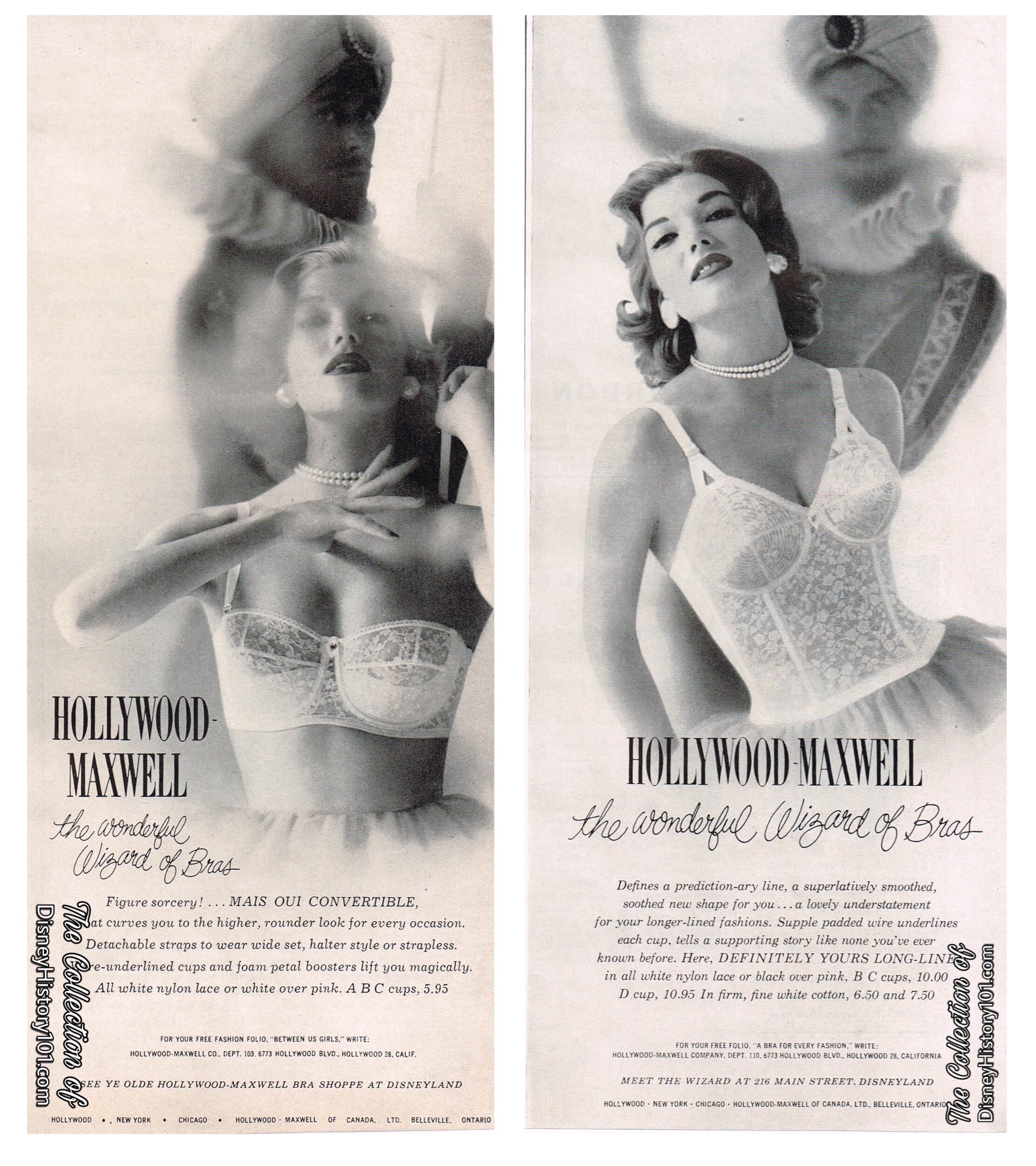
Hollywood-Maxwell Brassiere Co. of Los Angeles Advertisements Featuring “The Wizard”
Now, “Disneyland is a place to have fun… and with the fun it is a place where you can learn,” according to “Disneyland, U.S.A.” (published 1958, for potential Participants). Much like the aforementioned free exhibits, there were numerous artifacts on display. An authentic 1860 Singer Sewing Machine was a “most unusual and unique part of the display” (according to one publication). Still, perhaps the most unusual part of the display (in our opinion), was the “mechanical wizard… [emceeing a] continual show of fashions”! If you are wondering what this emcee looked like, contemporaneous advertisements (printed in publications) preserve the mysterious and wonderful “Wizard of Bras” for the curious. One of the most in-depth published sources about this new exhibit is the article “Mechanical Wizard Emcees Continual Show of Fashions,” published July 15, 1955, as a supplement for the “Register” of Santa Ana, California. If you would like to hear roughly a minute of the narration from the Intimate Apparel Show, please visit the following link HERE.
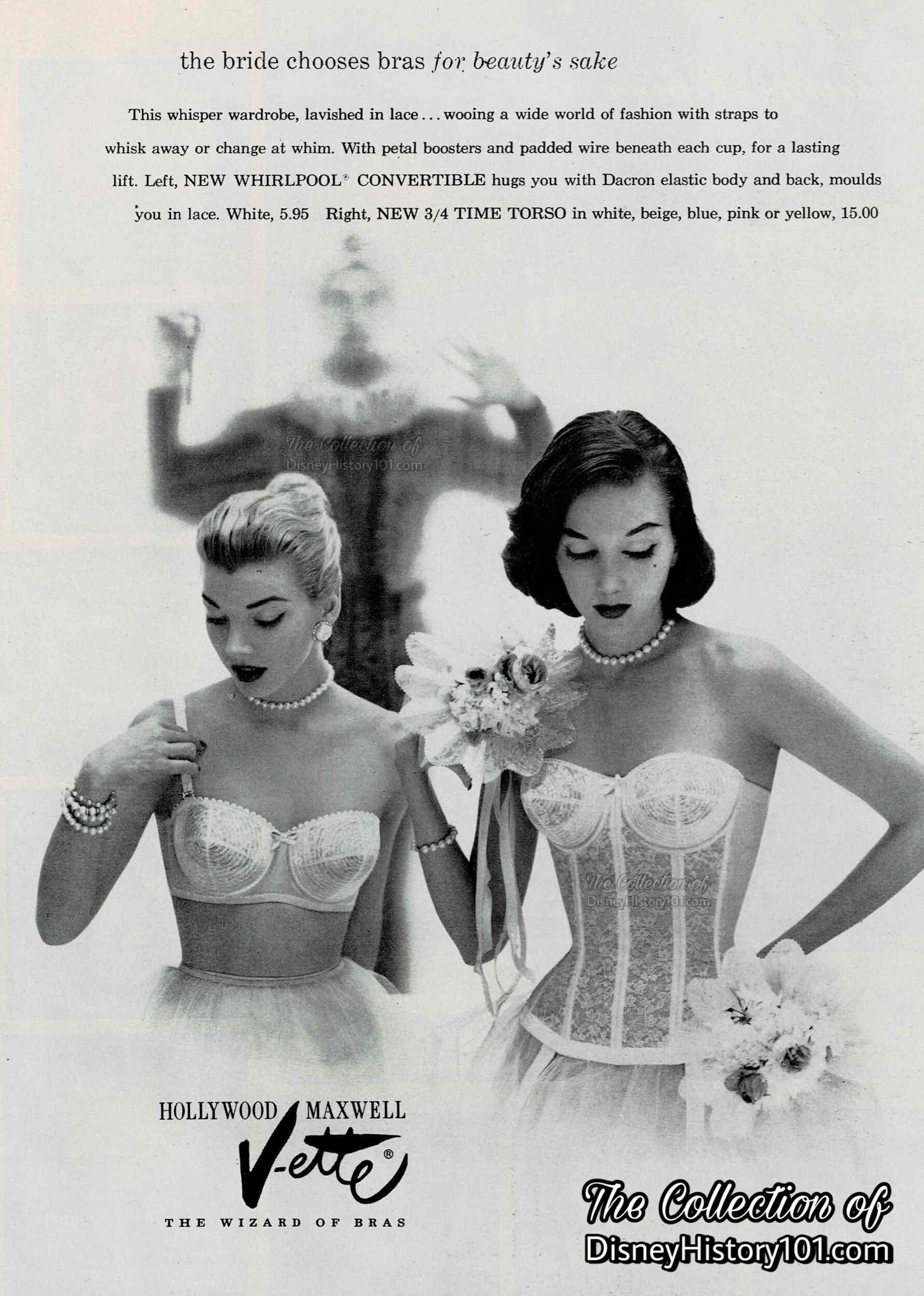
The Wizard of Bras fades into the background of a Hollywood-Maxwell Company V-Ette Advertisement, published in Bride's Magazine, during a post-Disneyland Lessee era, in Summer of 1956
By the release of the “Disneyland 1st Anniversary Souvenir Pictorial” in 1956, the shops of Main Street U.S.A. were reckoned among the ”stores whose shelves bulge with worlds of distinctive merchandise.” Alas, the Hollywood- Maxwell Intimate Apparel Shop was short-lived, operating for less than a year (and was not around by the time of this special publication). The 443 square-foot Hollywood Maxwell parcel (or, store space) was absorbed by Ruggles China & Gift.
However, this intimate chapter of Hollywood-Maxwell & Main Street, U.S.A. history represents such a quaint and charming time of sponsorship and shopping at Disneyland - one that we shall not forget!
By January 1, 1958, Ruggles China & Gifts had grown beyond their original 1,024 square-foot shop and consumed two other parcels (a 308 square-foot hallway addition and the 443 square-foot former Hollywood Maxwell shop). In the present, the building serves as the Palm Parlor, where Disney Legend Rolly Crump serves as an assistant (owing to a window Imagineered by Jeremy Fulton).
